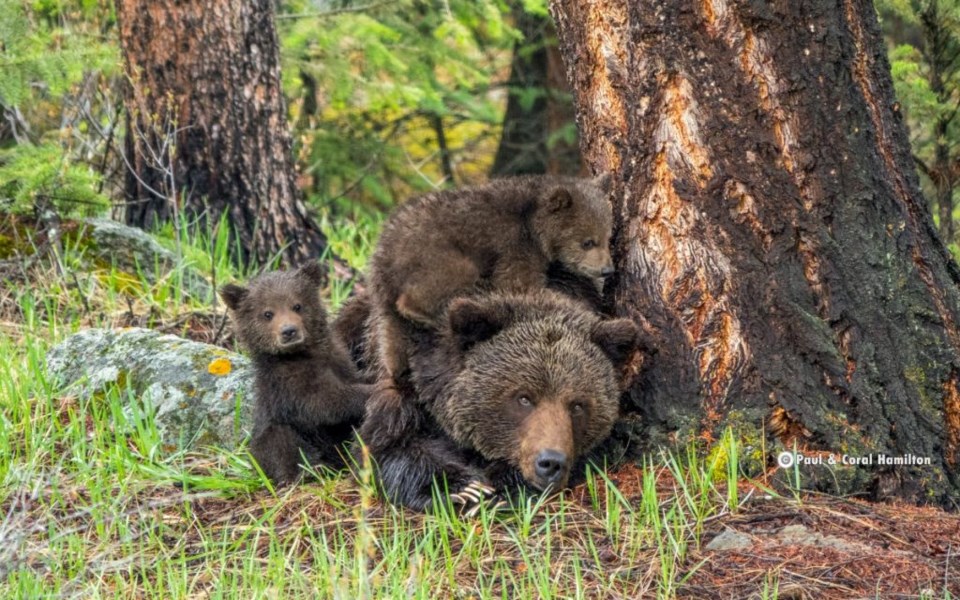
A mama grizzly bear and her new twin cubs have captured the hearts of Jasperites.
The trio has been spotted by locals over the past week or so just outside of town - playing and relaxing in the forest.
Parks Canada said the mother very closely resembles a bear that had two cubs three years ago - but that has not been confirmed.
These two playful cubs are young-of-year.
Another grizzly mother and three older cubs have also been spotted almost daily by Jasperites a few kilometres from the townsite.
The locations of these bears will not be shared publicly in an effort to give wildlife space and to reduce bear jams in Jasper National Park.
Parks Canada would like to remind the public to adhere to wildlife closures and treat the park and wildlife with respect, stay on established trails to avoid trampling vegetation and always give wildlife plenty of space.

Bear cub basics
Jasper National Park is home to about 109 grizzly bears and research indicates that on average, female grizzly bears have offspring every four to five years.
Mating takes place from mid-May to early July but females experience delayed implantation - so the embryo does not implant in the uterus until November or December, and only if the bear has enough fat reserves to sustain her and the developing fetuses through hibernation.
Cubs are born in the den in late January to early February and weigh less than a pound. While the female dozes for another several months, the cubs nurse on milk rich in fat.
By the time the female emerges from the den with her cubs-of-year, they weigh around 18 pounds. A healthy young-of-year cub can weigh up to about 100 pounds by the time the family group dens in the fall.
Offspring typically remain with their mothers for at least three years. During this time, the female nurtures, protects and educates her young, which increases their chances of reaching maturity and reproducing.
While under their mother’s care, offspring learn how to forage and move through the landscape to access seasonal habitats.
Natural mortality is highest for young-of-year and is usually related to nutrition. Adult male bears sometimes kill offspring.
Bears that survive to become mature adults can live 20 to 30 years in the wild; however, most die human-caused deaths at an earlier age.
Bear safety
Parks Canada would like to remind the public to adhere to wildlife closures and treat the park and wildlife with respect, stay on established trails to avoid trampling vegetation and always give wildlife plenty of space.
Photographers including locals in search of good photo opportunities have a special responsibility to wildlife and should not surround, crowd or follow an animal or put people (especially children) at risk by posing them with wildlife.
Do not stalk or pursue wildlife, never follow an animal into the bush, and do not try to entice wildlife by feeding or by simulating animal call.
All wild animals experience stress when crowded by humans and wildlife behaviour is unpredictable, especially when females are with young and males are defending territory during the mating season.
It is your responsibility to watch for defensive warning signals and react accordingly by pulling back or leaving the area entirely.
The best way to safely photograph wildlife is from a vehicle or observation area. In general, stay back 100 metres from bears, 30 metres from all other large species, and 200 metres from coyote, fox or wolf dens.
If you spot defensive warning signals, pull back even more or leave the area.
Bears make a 'woofing' noise, growl and snap their jaws, bull elk and moose put their heads down and paw at the ground, and cow elk flatten their ears, stare directly at you and raise their rump hair.
If you cause an animal to move, you are too close.
Report all bear sightings to the Jasper Dispatch at 780-852-6155.



